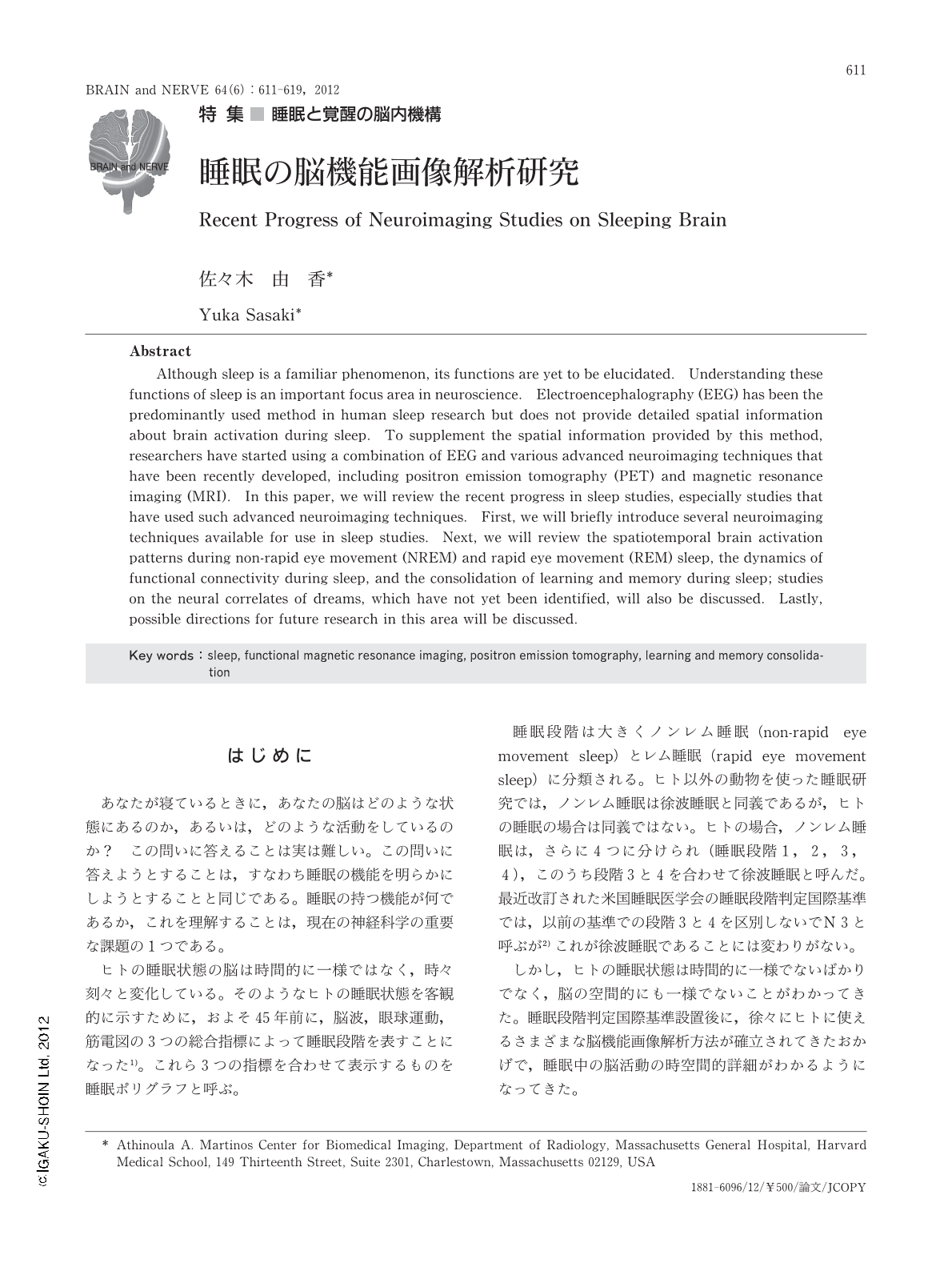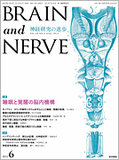Japanese
English
- 有料閲覧
- Abstract 文献概要
- 1ページ目 Look Inside
- 参考文献 Reference
はじめに
あなたが寝ているときに,あなたの脳はどのような状態にあるのか,あるいは,どのような活動をしているのか? この問いに答えることは実は難しい。この問いに答えようとすることは,すなわち睡眠の機能を明らかにしようとすることと同じである。睡眠の持つ機能が何であるか,これを理解することは,現在の神経科学の重要な課題の1つである。
ヒトの睡眠状態の脳は時間的に一様ではなく,時々刻々と変化している。そのようなヒトの睡眠状態を客観的に示すために,およそ45年前に,脳波,眼球運動,筋電図の3つの総合指標によって睡眠段階を表すことになった1)。これら3つの指標を合わせて表示するものを睡眠ポリグラフと呼ぶ。
睡眠段階は大きくノンレム睡眠(non-rapid eye movement sleep)とレム睡眠(rapid eye movement sleep)に分類される。ヒト以外の動物を使った睡眠研究では,ノンレム睡眠は徐波睡眠と同義であるが,ヒトの睡眠の場合は同義ではない。ヒトの場合,ノンレム睡眠は,さらに4つに分けられ(睡眠段階1,2,3,4),このうち段階3と4を合わせて徐波睡眠と呼んだ。最近改訂された米国睡眠医学会の睡眠段階判定国際基準では,以前の基準での段階3と4を区別しないでN3と呼ぶが2)これが徐波睡眠であることには変わりがない。
しかし,ヒトの睡眠状態は時間的に一様でないばかりでなく,脳の空間的にも一様でないことがわかってきた。睡眠段階判定国際基準設置後に,徐々にヒトに使えるさまざまな脳機能画像解析方法が確立されてきたおかげで,睡眠中の脳活動の時空間的詳細がわかるようになってきた。
本稿ではこれらの技術を利用したヒト睡眠脳活動研究の成果について概観していく。はじめに,近年開発されたヒト脳機能画像技術を簡単に紹介する。Ⅱ,Ⅲ節で,これら技術を利用して調べられた睡眠段階による脳活動変化,および,睡眠紡錘波や急速眼球運度などの睡眠ポリグラフ上における一過性の特徴的事象が生じているときの脳活動を概観する。Ⅳ節では夢と脳活動について言及する。Ⅴ節で,睡眠と脳領域間のコネクティビティの研究をいくつか紹介し,最後に,睡眠学習固定説についての研究を紹介する。
Abstract
Although sleep is a familiar phenomenon,its functions are yet to be elucidated. Understanding these functions of sleep is an important focus area in neuroscience. Electroencephalography (EEG) has been the predominantly used method in human sleep research but does not provide detailed spatial information about brain activation during sleep. To supplement the spatial information provided by this method,researchers have started using a combination of EEG and various advanced neuroimaging techniques that have been recently developed,including positron emission tomography (PET) and magnetic resonance imaging (MRI). In this paper,we will review the recent progress in sleep studies,especially studies that have used such advanced neuroimaging techniques. First,we will briefly introduce several neuroimaging techniques available for use in sleep studies. Next,we will review the spatiotemporal brain activation patterns during non-rapid eye movement (NREM) and rapid eye movement (REM) sleep,the dynamics of functional connectivity during sleep,and the consolidation of learning and memory during sleep; studies on the neural correlates of dreams,which have not yet been identified,will also be discussed. Lastly,possible directions for future research in this area will be discussed.

Copyright © 2012, Igaku-Shoin Ltd. All rights reserved.


